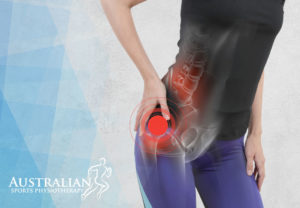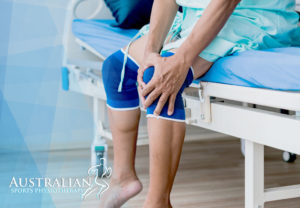Do you suffer from shin splints? If so, know that you are not alone! Countless athletes and recreational exercisers face this common medical condition.
Thankfully, physiotherapy can effectively reduce the tenderness associated with shin splints and help you fully recover and get back on track.
Your physiotherapist can create a personalised treatment plan tailored specifically to your needs to help reduce the pain associated with shin splints.
What are shin splints?
Shin splints are categorised as an overuse injury. Shin splints, or tenoperiostitis, are inflammations where tendons attach to the shin bone. This inflammation causes pain along the front of your lower leg, close to your shin bone.
Shin splints are a common overuse injury that responds well to rest, ice, stretching, and physiotherapy.
Common causes of shin splints
Tendons connect to the shin bone through a layer of connective tissue on top of the bone. The periosteum is the name given to this tissue. Muscle contraction pulls on tendons, which draw on the periosteum.
Shin splints are caused by excessive calf muscle traction and pulling on the periosteum (tissue surrounding the bone). Extreme traction leads to inflammation and pain. If left untreated, this bony reaction can worsen and result in stress fractures.
This mechanism is frequently attributed to poor training habits, such as rapidly increasing distance, duration, or intensity. However, poor biomechanics or strength can also cause increased stress and strain through the shin.
Additional risk factors for shin splints include:
- Inadequate/outdated footwear
- Flat or pronated feet
- Higher BMI – heavier load
- Being female (due to hormonal factors)
- Lower limb weakness, particularly in the calves
Overuse, altered biomechanics, or muscle tightness can cause periosteum damage. By initiating an inflammatory response, the body begins to repair the damage.
Common symptoms of shin splints
It causes pain below the knee in the front of the outer leg. The pain is usually felt on the outer edge of the mid-region of the leg, near the shin bone (tibia).
Pain is frequently felt in the early stages of a workout, then subsides only to reappear near the end. Shin splint pain is commonly described as dull at first.
However, the pain can become so severe with ongoing trauma that you stop working out entirely.
Physiotherapy treatment for shin splints
Before implementing a treatment protocol, an accurate assessment and diagnosis are required. Treatment is targeted at the underlying cause, as with any other physiotherapy treatment protocol. If medial tibial stress syndrome is suspected, physiotherapy treatment may include activity modification, soft tissue treatment such as massage and stretching, acupuncture, taping techniques, and biomechanics correction.
If the diagnosis is confirmed by a bone scan or MRI (and an x-ray will not show the damage), treatment will typically include rest, crutches, pain relief, and icing.
After which, activity modification and abnormal biomechanics correction are implemented. Meanwhile, low-impact swimming, deep-water running, and cycling can help keep an aerobic base without impeding healing.
If compartment syndrome is suspected, whether acute or chronic, compartment pressure testing, which measures the pressure within the muscle compartment before and after exercise, may be required.
The diagnosis is positive if the pressure is high and it takes a long time to settle after exercise. Treatment is usually similar to that of medial tibial stress syndrome.
In some cases, however, surgery is required to allow the muscle to “expand,” lowering the pressure within the compartment.
A patient’s lower limb biomechanics must be corrected for all shin conditions.
Hands-on treatment techniques that we commonly use for quick and effective pain relief include:
- Taping of the feet, ankles, and shins
- Deep tissue massage
- Dry needling
- Trigger point therapy
These techniques will get you through an important training session, game, or run, but they will only provide a short-term solution to a chronic shin problem. You will need a complete rehabilitation and recovery plan.
What is the average recovery time for shin splints?
On average, with the proper physiotherapy treatment, shin splints usually dissipate after three to four weeks of healing time for the legs. After their legs have healed, most people can resume their exercise routine. Since stress fractures take longer to heal, it is best to treat shin splints as soon as possible.

Final thoughts on physio for shin splints
We know how challenging dealing with shin splints can be – especially when managing day-to-day activities like walking or running. But we also understand that proper treatment for this common injury gives you the best chance of recovering quickly and completely.
That’s why it’s important to discuss options with one of our physiotherapists, who specialises in treating shin injuries and can assess, diagnose, and treat your condition in no time!









